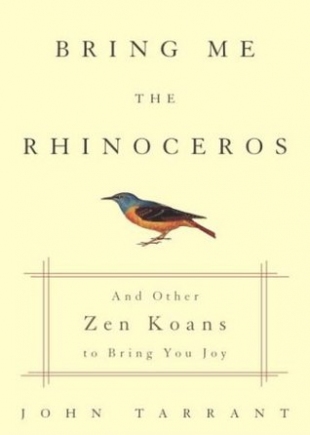John Tarrant is a Zen teacher and psychotherapist who directs the Pacific Zen Center, a venture in meditation and the arts. He is the author of The Light Inside the Dark: Zen, Soul, and the Spiritual Life. In this remarkable work, he brings to life the Zen practice of working with koans. These tricky and often profound questions were first used by Zen teachers when Chinese culture flowered 1,300 years ago, about the same time that the Arthurian legends flourished in the West. Tarrant explains that these enigmatic queries and statements "encourage you to make an ally of the unpredictability of the mind and to approach your life more as a work of art. The surprise they offer is the same one art offers: Inside unpredictability you will find not chaos, but beauty. Koans light up a life that may have been dormant in you; they hold out the possibility of transformation even if you are trying to address unclear or apparently insoluble problems." These teaching tools also encourage curiosity and uncover a hidden kindness in life.
In the koan referred to in the book title, Yanguan called to his assistant, "Bring me the rhinoceros fan." The assistant said, "It is broken." Yanguan said, "If the fan is broken, bring me the rhinoceros." At first we laugh at this tale, but after immersing ourselves in it with Tarrant's observations, we see that it makes two points: Not everything can be fixed, and if we do want to make things right, we often have to come up with solutions that involve a journey into the dark where we have never been before. As Tarrant puts it, "If you are stuck in some way or in a tight corner and can't imagine a way out, this koan might help."
Another koan is from Sengcan's saying: "The great way is not difficult / if you just don't pick and choose." We bring so much suffering upon ourselves by the stories we tell about what is desirable and what is terrible, what is worth saving and what should be thrown away. We reject things due to habits from the past, a belief about the proper way to respond, or the pressure of a cultural mindset. By setting aside our prejudices and habitual ways of responding to people, places, experiences, and things; we can open up to their true mystery and integrity. This koan and many of the other 13 examined here challenge us to consider how our lives are constricted by the ways we look at things: "You are suffering from your maps, your stories, your fiction, your prison. You are suffering from bad art."
Tarrant believes that true joy and happiness can be experienced "by unbuilding, unmaking, tossing overboard and generally subverting unhappiness." The author makes a convincing case for koans as questing tools that help us discover mystery, uncertainty, play, transformation, and kindness in our daily lives. Best of all, they free the mind from our self-imposed shackles.
